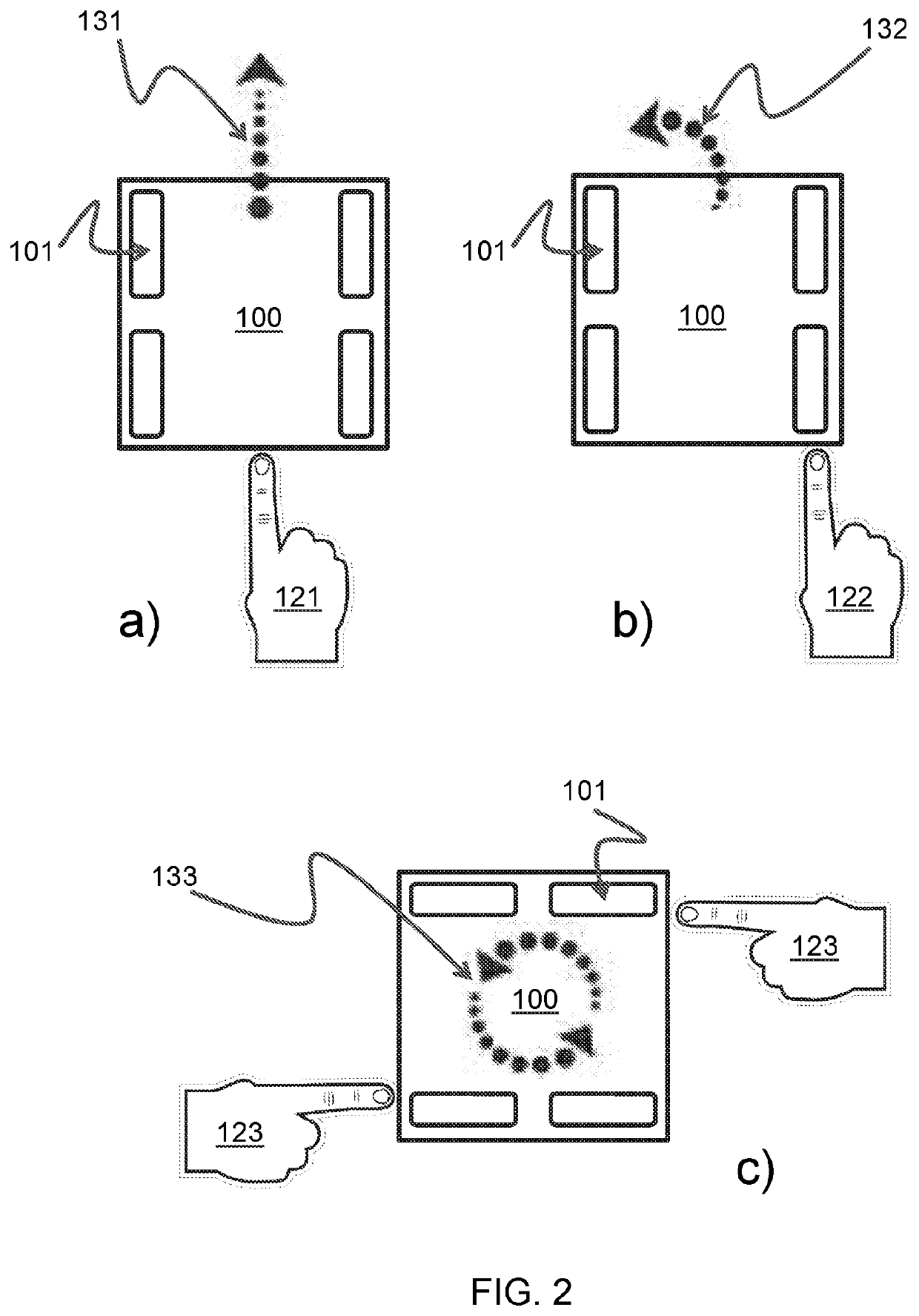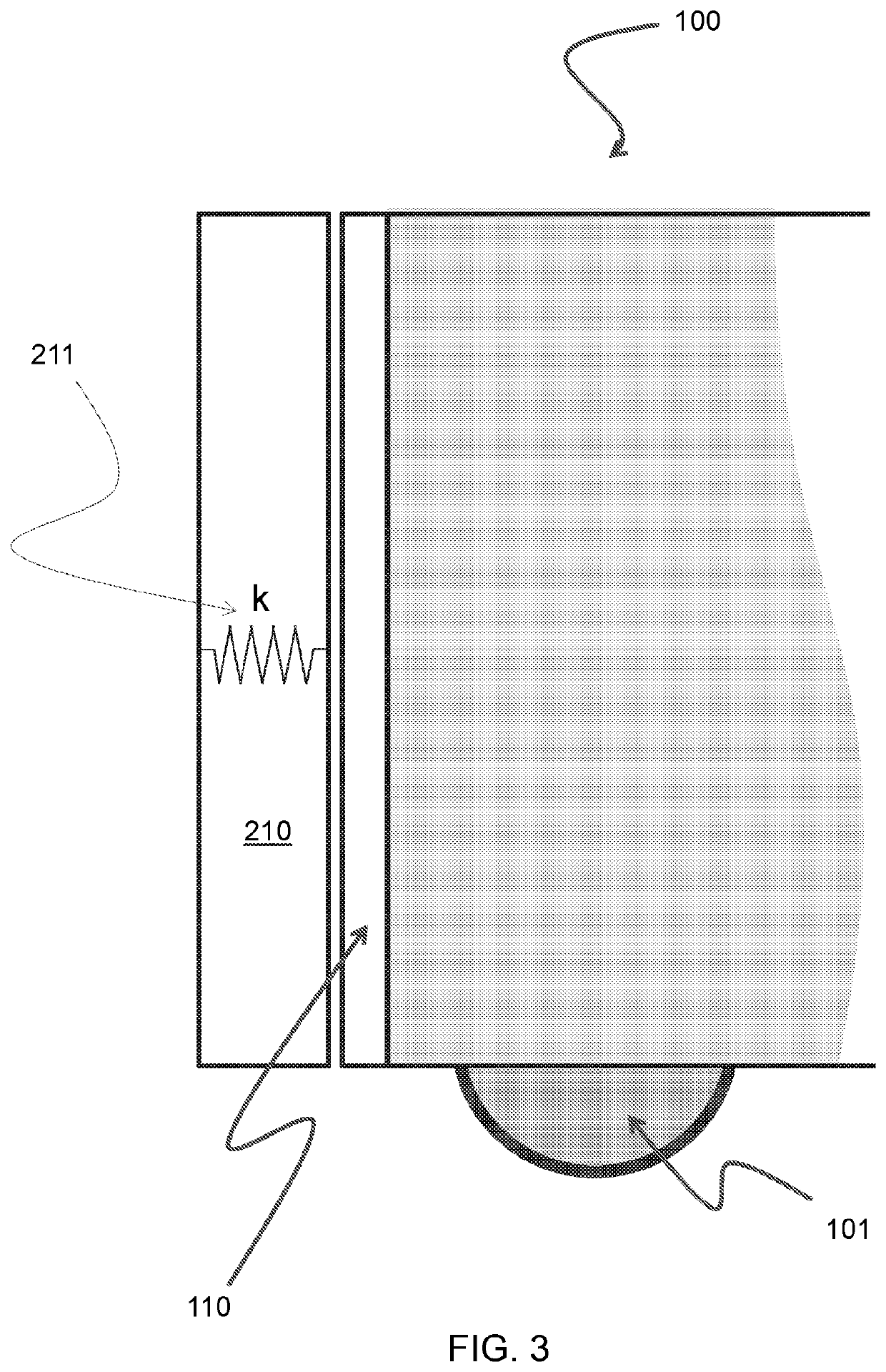Control system for self-moving platforms
a technology of control system and self-moving platform, which is applied in the direction of manipulators, non-electric variable control, instruments, etc., can solve the problems of insufficient detection of black, transparent or reflective obstacles by infrared sensors, and the operative limitations of this approach
- Summary
- Abstract
- Description
- Claims
- Application Information
AI Technical Summary
Benefits of technology
Problems solved by technology
Method used
Image
Examples
Embodiment Construction
[0048]FIG. 1 provides an overall view of a self-moving robotized platform whose shape is roughly constituted by a parallelepiped with four vertical sides.
[0049]Obviously any type of shape is possible, however, the parallelepiped-shaped platform, in addition to allow a clear illustration of the inventive principles of the present invention, also constitutes one of the preferred shapes as it can be conveniently used as a trolley for the transport of payloads, and can also house all the components necessary for the operation of the same platform. In addition, it can be also suitable to accommodate the integration of eventual mechanisms functional in different applications.
[0050]With the number 100 it is then indicated, as a whole, the self-moving robotized platform according to the teachings of the present invention. However, the representation offered in FIG. 1 is essential and partial; they are highlighted only few elements, which are useful to illustrate some important features of s...
PUM
 Login to View More
Login to View More Abstract
Description
Claims
Application Information
 Login to View More
Login to View More - R&D
- Intellectual Property
- Life Sciences
- Materials
- Tech Scout
- Unparalleled Data Quality
- Higher Quality Content
- 60% Fewer Hallucinations
Browse by: Latest US Patents, China's latest patents, Technical Efficacy Thesaurus, Application Domain, Technology Topic, Popular Technical Reports.
© 2025 PatSnap. All rights reserved.Legal|Privacy policy|Modern Slavery Act Transparency Statement|Sitemap|About US| Contact US: help@patsnap.com



